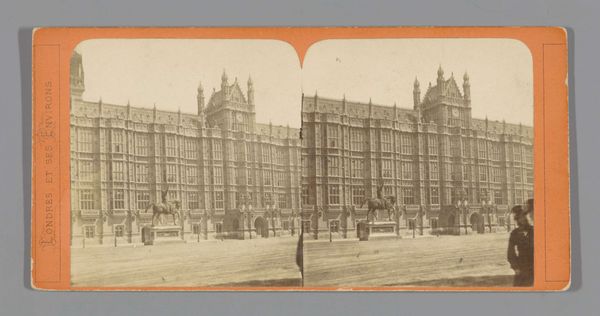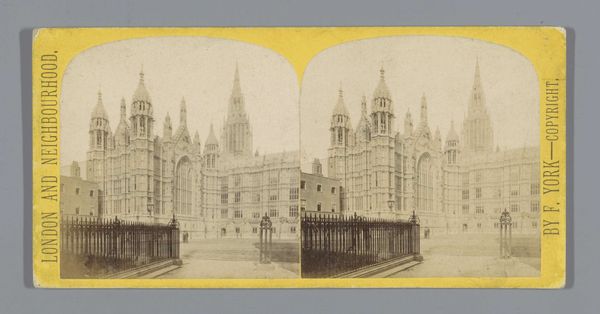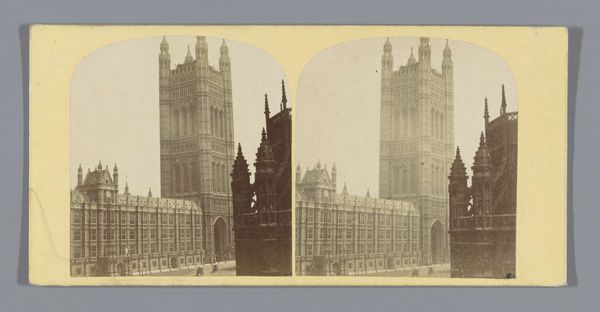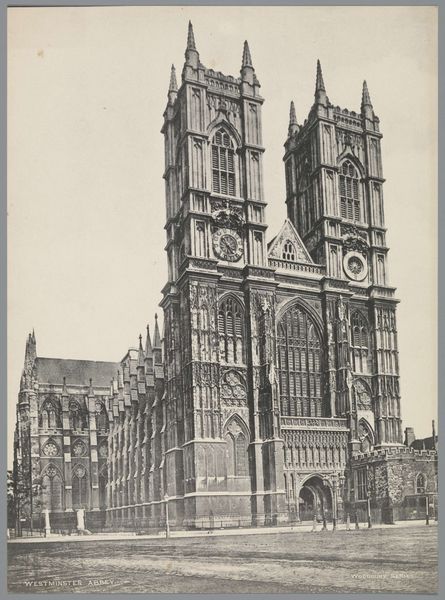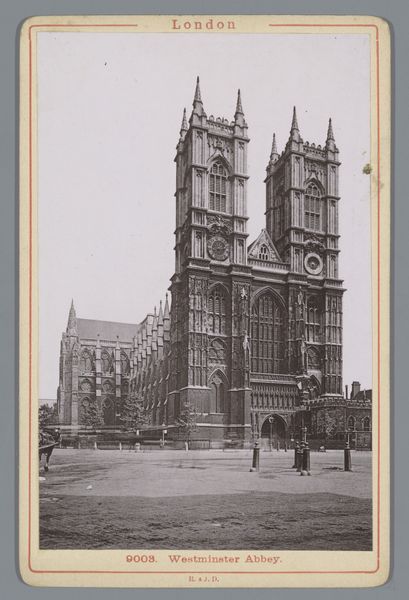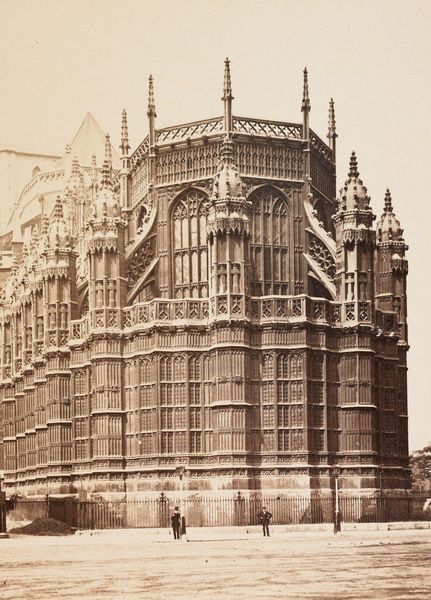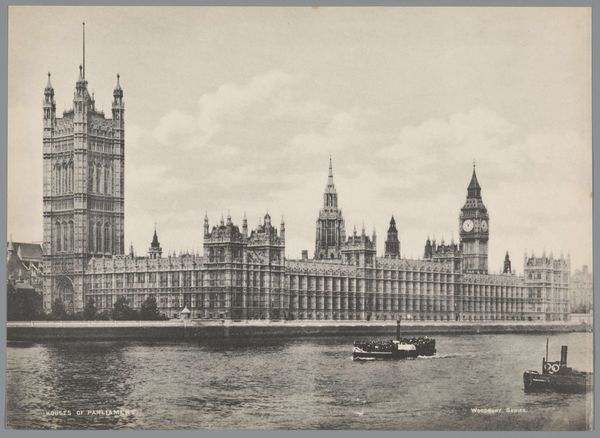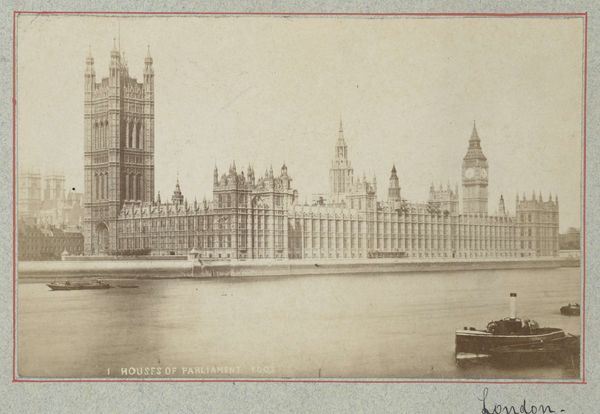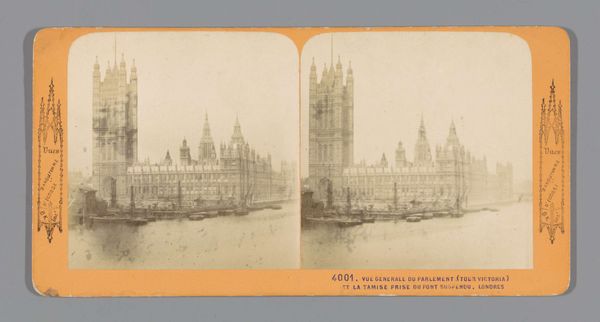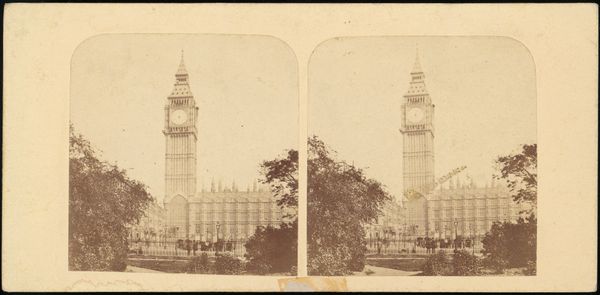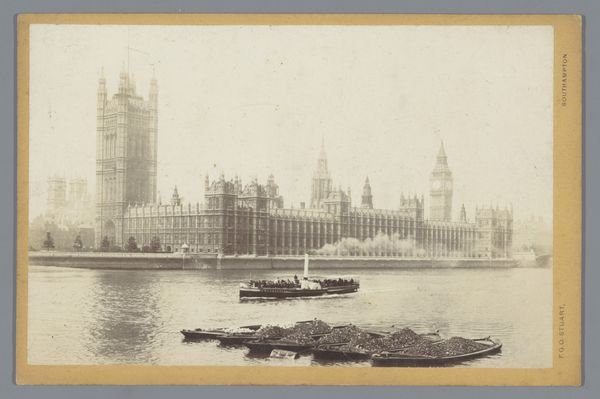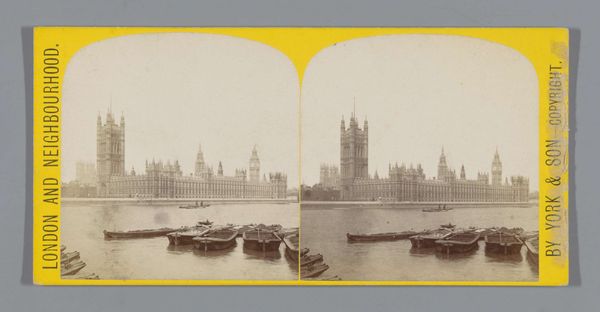
Palace of Westminster met een standbeeld van Richard I van Engeland in Londen c. 1850 - 1880
0:00
0:00
photography, albumen-print
#
photography
#
cityscape
#
albumen-print
#
realism
Dimensions: height 85 mm, width 170 mm
Copyright: Rijks Museum: Open Domain
Curator: This albumen print, dating from around 1850 to 1880, captures the Palace of Westminster with its statue of Richard I. Editor: It's monumental, imposing even, despite the sepia tones lending it a slightly faded quality. The repetition of windows and arches...it almost feels like a factory, churning out laws. Curator: Interesting observation. Consider, though, that the Palace isn’t just a legislative building; it's a deliberate symbol of British power and history, carefully constructed after the devastating fire of 1834 to evoke medieval grandeur. Editor: Grand, sure, but at whose expense? All that ornate stonework – how many masons, how many hours of labor went into projecting this image of authority? I want to know more about the materiality, about the cost of its construction. Curator: A fair point. The choice of Gothic Revival was itself a political statement, aligning Victorian Britain with a perceived golden age. And photography, especially early photography, played a role in disseminating that image. Editor: Exactly! It’s not just a document; it's a constructed view, mass-produced to impress. I'm thinking about the specific properties of albumen printing – the paper, the chemical process, its accessibility… Curator: Absolutely. Photography allowed for unprecedented reach. Think about how this image would circulate— reinforcing ideas about British identity and governance on a massive scale. Editor: Still, when I look at it, I keep wondering about the physical effort. Each brick laid, each window pane fitted... Curator: I agree that's an essential element. And to conclude, reflecting on how historical buildings, and their images, reinforce social and political structure is as crucial as understanding craft traditions. Editor: Indeed. An artwork is never neutral; it always carries a trace of production and societal context that cannot be ignored.
Comments
No comments
Be the first to comment and join the conversation on the ultimate creative platform.
